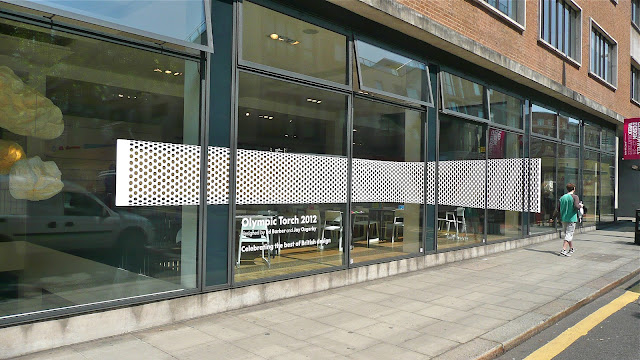“Victoria Pendleton will not be able to tweet about
tucking into her Weetabix on the morning of race day, or post a video message
to fans from her room in the athletes' village. Pub landlords will be banned
from posting signs reading: "Come and watch the London Games from our big
screen!" Fans in the crowd won't be allowed to upload snippets of the
day's action to YouTube – or even, potentially, to post their snaps from inside
the Olympic Village on Facebook. And a crack team of branding
"police", the Games organisers Locog have acknowledged, will be
checking every bathroom in every Olympic venue – with the power to remove or
tape over manufacturers' logos even on soap dispensers, wash basins and
toilets.
With just … months to go until the opening of the
London 2012 Games, attention is increasingly turning to what many legal experts
consider to be the most stringent restrictions ever put in place to protect
sponsors' brands and broadcasting rights, affecting every athlete, Olympics
ticket holder and business in the UK.”
That is Esther
Addley, writing in the Guardian about the laws surrounding the Olympics, and the
interpretation likely to be put on them. See her whole article here
She quotes this incident:
A photoshoot promoting easyJet's new routes from
London Southend airport was also interrupted by a Locog monitor after local
athlete Sally Gunnell was handed a union flag to drape over her shoulders.
According to reports, Locog felt this would create too direct an association
with her famous pose after winning Olympic gold in Barcelona in 1992 (British
Airways, rather than easyJet, is the airline sponsor of London 2012).
Locog chose not to comment on the incident, but
aspokeswoman said: "If we did not take steps to protect the brand from
unauthorised use and ambush marketing, the exclusive rights which our partners
have acquired would be undermined. Without the investment of our partners, we
simply couldn't stage the Games."
I’m tired of
hearing that if the sponsors didn’t pay we couldn’t stage the Games. The largest share by far of the
reported £10 billion costs comes not from sponsors but from every UK taxpayer
by way of central government funds, the National Lottery, the Mayor of London,
the budgets of the MoD and Met police. Let’s not forget also the hard work of
70,000 volunteers. We could have staged the Games without the sponsors: they would have been cheaper, less profligate Games.
I have to
assume that the artist who created this graffiti in one of my local streets
will shortly be marched off to the Tower, having created "an association with the London Olympics" - see the rules below.
(Look closely to see how the bird is expressing its displeasure with the
Olympic rings)
Banned during the Games: What the rules say
Non-sponsor
companies and businesses don't …
• Say:
"Supporting our athletes at the 2012 Games!" or "Help us make it
a Gold 2012!"
• Use images
that suggest an assocation with the London Olympics.
• Offer
tickets as part of a promotion.
Crowd members
don't …
• Upload a
clip of William and Kate tripping up the steps of the Olympic stadium to
Youtube: "A Ticket Holder may not license, broadcast or publish video
and/or sound recordings, including on social networking websites and the
internet."
• Post your
pictures to Facebook – this may fall under the same restriction.
• Take part
in an ambush marketing stunt, "including, for the avoidance of doubt
individual or group ambush marketing".




























